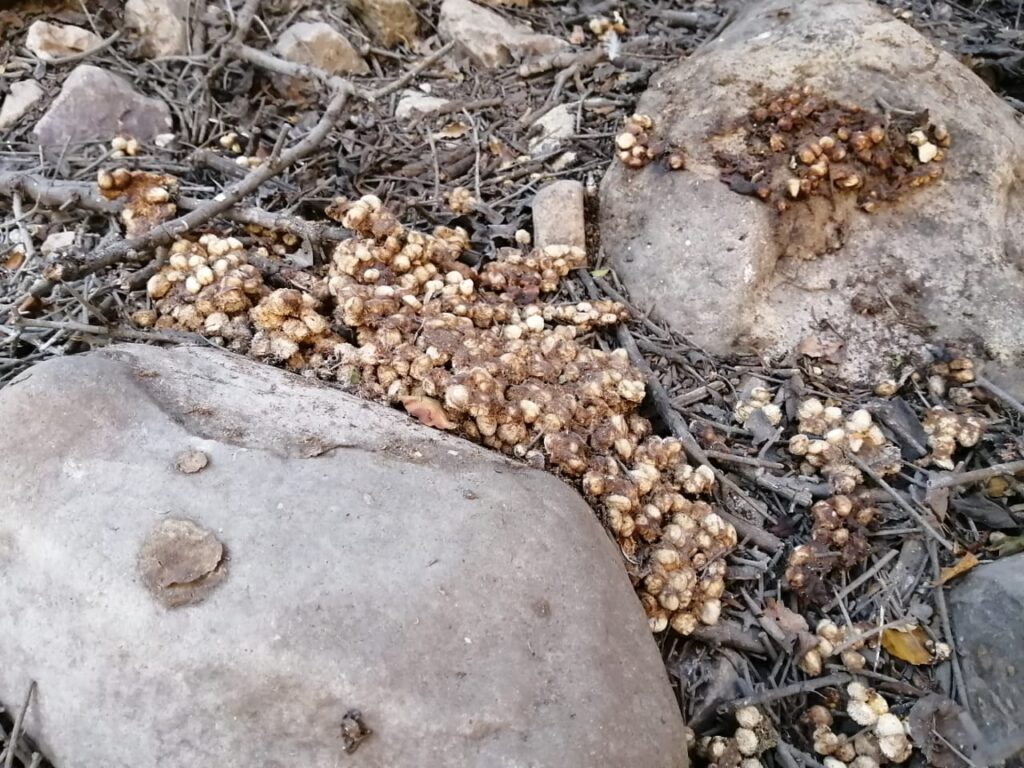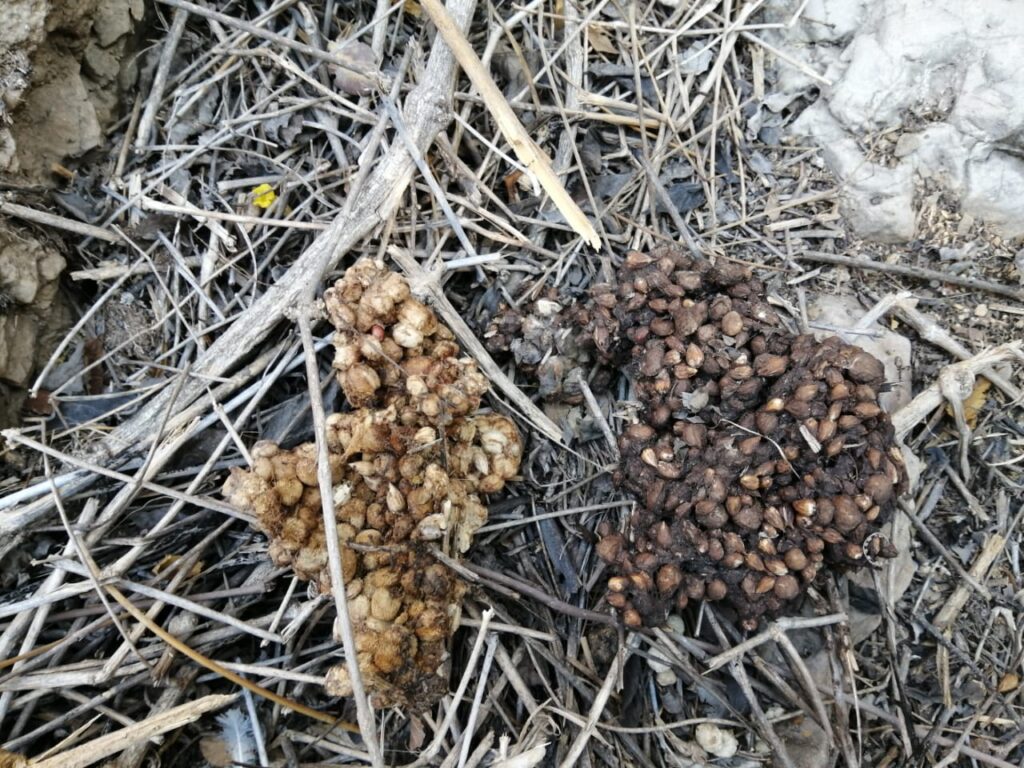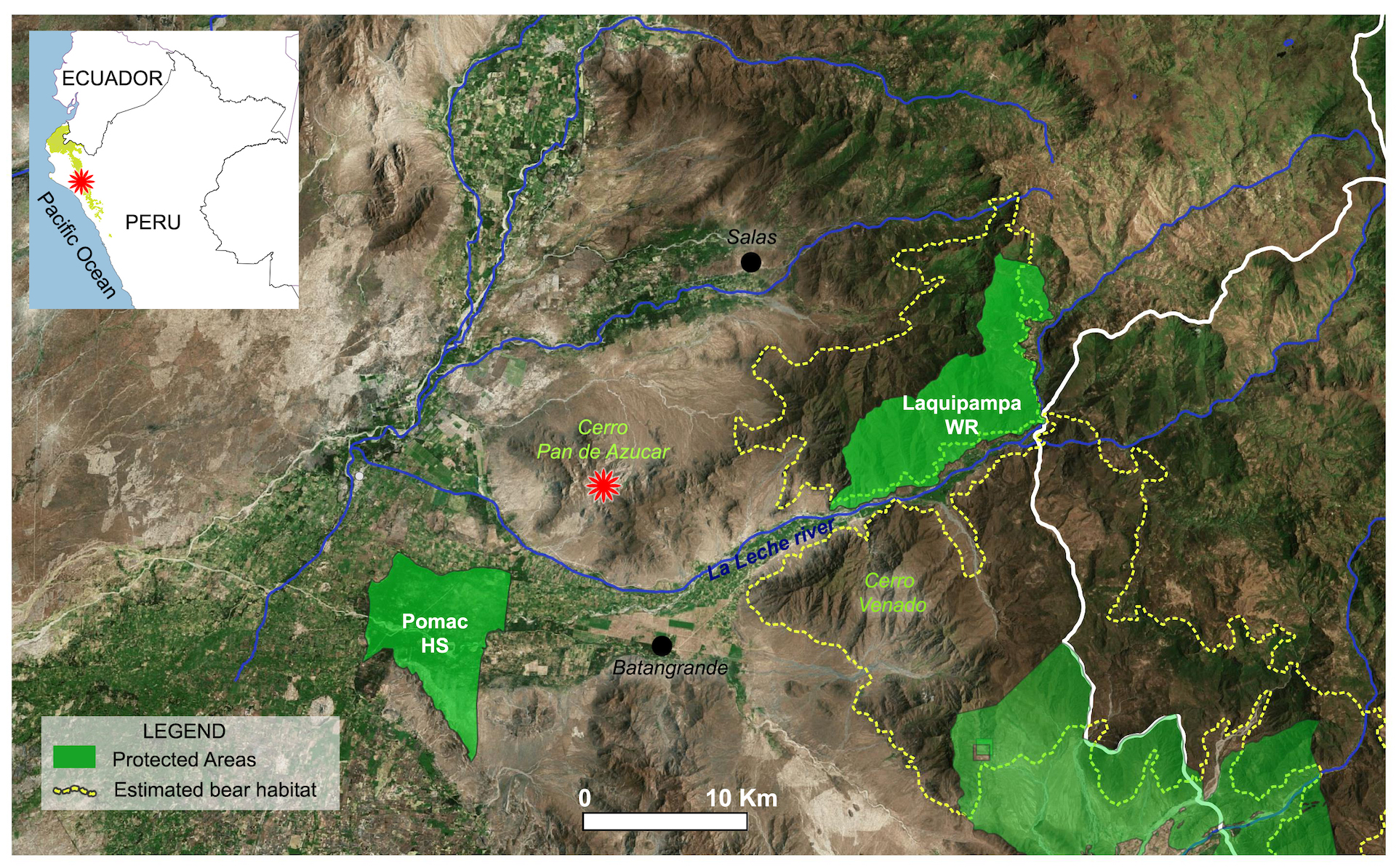MAKE A GIFT TO PROTECT THE ONLY BEAR IN SOUTH AMERICA
![]()
This camera trap photo confirms bear presence in an area called Pan de Azucar (“Sugar Loaf” in English) and captures one of our biggest field discoveries in over 12 years of monitoring spectacled bears in the dry forest of northern Peru.
We were completely surprised to see a bear here. The camera trap was situated on an extremely arid mountain ridge with limited water sources at the very edge of known bear habitat in the La Leche river basin. We thought the area could not be inhabited by bears or other animals because it is so dry.

This photo means a few important things that make a positive impact for spectacled bear conservation.
We have expanded the known habitat range of spectacled bears.
Immediately after discovering this photo, we visited Pan de Azucar to understand if, and how, more bears use the area. We installed five more camera traps, found sapote and overo trees that are key food sources, and bear scat suggesting the area may be used by more than one individual.
These early results are very promising and show the base of the mountain is a likely place where bears descend from the ridge to find food fruits in the summer and potentially even in the winter season. The more evidence we have of bear use and presence, the more rationale we have to protect the land.
 Bear scat found in Pan de Azucar provides more evidence of bear presence
Bear scat found in Pan de Azucar provides more evidence of bear presence 
Finding bears in Pan de Azucar presents the opportunity to create one large habitat range for spectacled bears including two national protected areas. Pan de Azucar is located between two national protected areas: Bosque de Pomac and the Laquipampa Wildlife Refuge.

The national park authorities are very enthusiastic about the potential of linking the parks with habitat outside of the protected areas because that makes the parks more effective; bears need large areas to roam and they don’t stop at the park boundary. The parks are providing camera traps for us to install outside of the protected areas to monitor bears in Pan de Azucar.
We are also working with SERFOR, the Peruvian national forestry authority, to designate this area as “Habitat Critico”, which is a government regulation that preserves key habitats, like the dry forest, for endangered species including the spectacled bear. In mid-August we visited Pan de Azucar with SERFOR representatives to advance this process.

This major step forward for spectacled bear conservation in northern Peru all started with a photo, showing that camera traps and long-term monitoring are essential for protecting spectacled bears and their habitat.
![]()